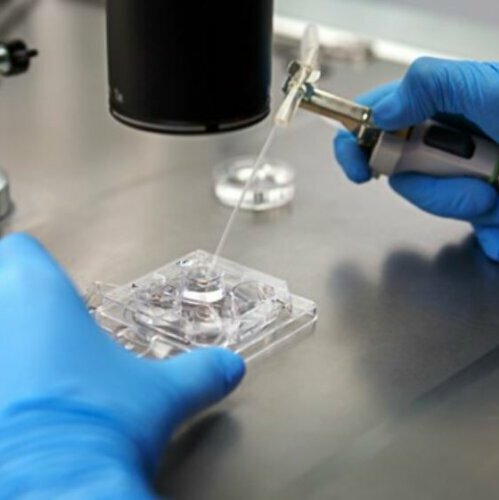STRATEGIES FOR IN-VITRO TESTING
As a constant question for all active ingredients or personal cares, talking about testing is a continuum in each step of the product development. The cosmeticians will have to precisely define the global context of its testing looking at the following points: the nature of the products, the goal of the assay, the studied claims and the linked mechanism of action, the type of the results, the regulation constraints.
For preliminary testing (toxicology and safety), in silico, in tubo, in vitro and ex vivo are the more commonly used and help progressively to have robust alternatives to animal testing.
What really boosts the use of in-vitro tests for efficacy validation ?
1. A limitless choice of biomarkers
The numerous choices of hundred biomarkers can provide an almost infinite variety of assays on the cellular mechanism of the skin or the hair. For example, to study the regenerating effect, you can select among various biomarkers such as Collagen IV, VII, XVII, Elastin fibres and structure, Corneodesmosin, Cytokeratins, Fibronectin, Integrins, Kallikreins, Lipids peroxidised, Lumican, Perlecan, Psoriasin, Sirtuin… the list is not comprehensive, and almost every month there is a new publication highlighting the interest of new biomarkers.
2. The Various Choice of Analysis Methods
After choosing the biomarkers, the claim objectivation can be founded on several quantitative and visual analysis methods with the more common ones such as gene expression, morphology and histology, proteic and metabolic analyse (Elisa, Western Blot…) and the multi-omics techniques. A special comment for the multi-omics techniques which can provide untargeted studies offering a starting review of its performance potential.
3. The infinite variety of assay supports
For in vitro assays there are significant distinctions between tests on human monolayer cells (primary or lines) commonly used for hydrophilic substances and assays on 3D reconstructed skin models, skin explants and 3D skin bioprint that can be used for lipophilic products.
Monolayer cell tests have become a routine with a choice of a multitude of primary cells provided from various skin types and ages: keratinocytes, fibroblasts, melanocytes, sebocytes, adipocytes and the opportunity of monoculture or coculture supports… Then, the wide selection of reconstructed skin models is fantastic (baby skin, altered skin, ageing skin…) with epidermis model or fullthickness skin model. Most of the CRO’s can buy the standard cells or skin models can offer their own in-house models or can also develop specific ones with various characteristics dedicated to special objectivations. To give the best predictive results, they offer sophisticated supports for the various claims and functions of the skin, hair, glands, cornea, or mucosae…: integrating capillaries, melanocytes, neurons, sebocytes…
Are in vitro assays more than trends ?
Beyond the assay duration that everybody would like longer, 3D skin models and ex vivo testing present undeniable benefits through: the multiple varieties of robust supports, the standardised assay conditions, the combination of assays with multiple action mechanisms, an ethical alternative to human experiments, the quantitative and illustrative results.
Finally, almost all the safety and claims substantiation is now in vitro compatible with reliable assay protocols and robust results interpretation. The UV protection is also a wide range of in vitro tests giving research perspectives on the classical anti-UVA and anti-UVB Index but also on the blue light, and infrared protection.
The cosmetic world needs testing alternatives especially in toxicology, to replace animal testing that are just not anymore ethically acceptable. For efficacy objectivation, these methods represent often quicker, cheaper and a reliable proof of concept as predictors of efficacy in humans. The preliminary discussions with each CRO’s to design the protocol is crucial to select the best analyses adapted to the searched biomarkers.
These methods can be considered as a fantastic value for the beauty care and actives development and a great contribution to the constant innovation on their performance. They remain an irreplaceable component of the working tools in the skin and hair field.
Published by Skinobs on October 2020









 Follow us on Linkedin!
Follow us on Linkedin!